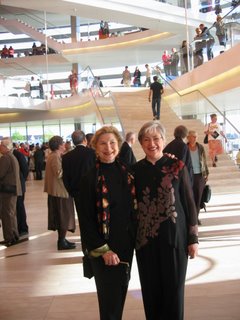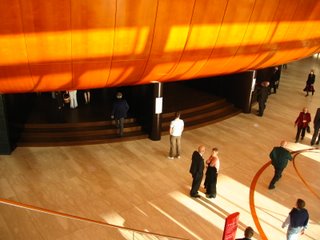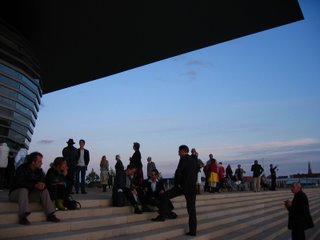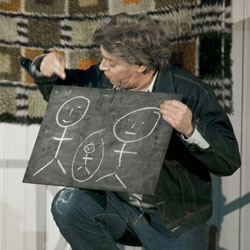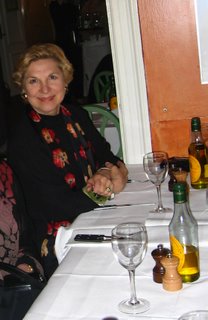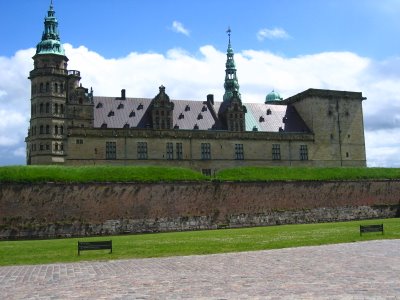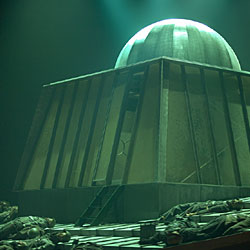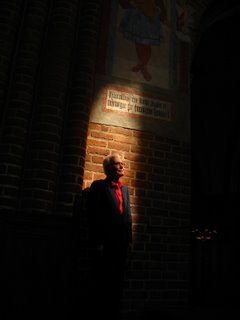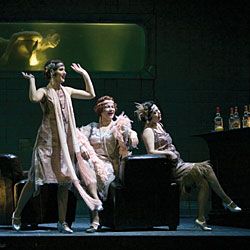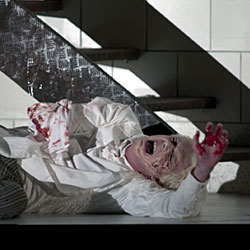Miscellaneous Copenhagen Adventures
I only have one day left in Copenhagen, so I thought I’d briefly report on some of the other fun things we’ve seen. The statue of Hans Christian Anderson’s Little Mermaid in Copenhagen’s main canal is amazingly lame. An endless stream of busses full of Japanese tourists washes by this little spot, a little north of the lovely Amalienborg (where the Danish royal family live today). I went there because Juraj insisted, having always had a thing for this particular story. (If you only know the story from the Disney version, you should know that Hans Christian Anderson, who languished in unrequited love most of his life, wrote a very different ending to his version. And in the Czech opera Rusalka by Dvořak, which we were producing when I first met my friend Juraj, who’s from Slovakia, she refuses to kill the prince and thus forfeits her voice to the wicked witch and becomes a will-o’-the-wisp, a wraith luring men to their death in swamps for the rest of time; the foreign princess rejects the prince, whereupon he goes crazy and comes reeling into the forest looking for the little mermaid; and when he finds her, she’s a wraith and kisses him with lips of ice. He dies, and she lives forever after as this horrible undead wraith-vampire creature. Stupid Disney always tries to make everything so happy!)
In any event, unless you’re a tool you should skip the Little Mermaid statue adventure on your visit to Copenhagen. The statue goes back about a hundred years, during which time it’s been decapitated twice and defaced several times, probably by tourists disappointed after all the hype. Here’s a photo of the statue, looking across the canal at a sailboat and the windmills on the far shore (Denmark, being a typically Green Scandinavian country, is covered in windmills):

A far more interesting statue, south of the Little Mermaid near Churchill Plads, memorializes the myth of Gefion, retold in Snorri Sturluson’s Prose Edda (one of the principal sources of the old Norse myths which inspired Wagner’s stories for the Ring). The island of Zealand, where I’ve spent the last week, was created when a giantess named Gefion, assisted by a team of very large bulls, dragged some land that had been part of Sweden across the sea. This statue is one of those cool ‘fountain’ statues, which has water coming out of it in various spots—including the nostrils of the steaming bulls, which makes for a really neat effect.

In addition to scouring the city looking at statues, we’ve done more than a little inspection of the state of design in contemporary Denmark. Back home in the US, of course, we mostly think of Danishes as tasty pastries and the country of Denmark in connection with furniture (although the cafe at IKEA down in Renton, Washington serves Swedish meatballs and lutefisk, not Danish food). Sure enough, Denmark is the land of design. Stores upon stores showcase the latest and greatest in Danish design for any product you can think of. It reminds me of Professor Tolkien’s elves: making art out of the most ordinary elements of everyday life, like toilets, instead of our American project of making the most sacred elements of life (food, sex, communication) into the mundane. Here’s a photo from the lovely Copenhagen Kunst Industri Museum, the Museum of Danish Design. This piece is silver, folded into ocean waves and then beaten with a hammer to give it texture, and with a little golden ship sailing on the sea:

The bulk of the Kunstindustrimuseum (which I highly recommend) is a historical survey of design trends in Denmark and the world, including a thorough history of 20th century Danish design, as well as rooms devoted to many of the earlier trends which still influence our design today. Mary, of course, gravitated to the 1960s room, and got several ideas to make her condo in Seattle even more of a flashback than it already is:

Being fed up with statues, museums, churches, and operas, I took the morning off today and took the bus out to the Copenhagen suburb of Dragør, south of the airport, just at the bottom corner of Zealand where the Ørsund strait opens up into the Baltic Sea. What a cute little town! There’s a glorious marina, with boats from every corner of the world, and it was fun to eat an ice cream (a Danish obsession, there’s ice cream for sale on every corner in this weird country—and yet the people are very skinny) while walking along the piers looking at the boats. As you know, everyone is immediately ten times cuter if they are on a boat.
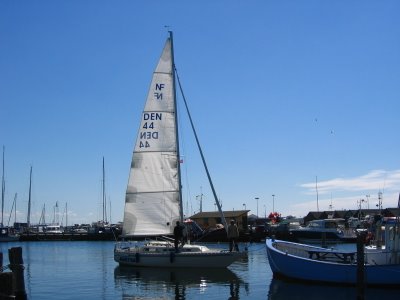
Dragør is south of the Copenhagen airport, and south of the bridge to Malmø, Sweden. (It’s easy nowadays to get to Sweden from Denmark: you drive across this bridge or take a train through the tunnel that follows the bridge route. At 7.8 km, it’s the longest bridge in Europe. Reminds me of waterways I know in northern Michigan and in the Puget Sound region, however.) Here I am lounging in the grass behind Dragør Fort, which used to patrol this area and defend Denmark from ships coming up the Baltic Sea, which is spread out to the right; to the left, you can see the Malmø bridge. As the picture indicates, today was a gorgeous day.
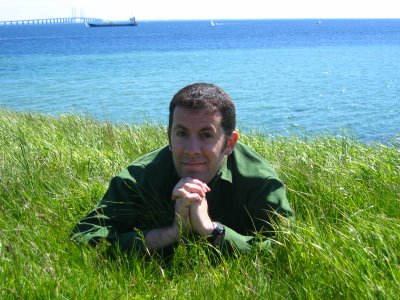
The day climaxed in a meal for the ages: we all ate at Kommandanten, one of Copenhagen’s nicest restaurants, with a quartet of terrific Brits who had been to Seattle and who are also attending this Copenhagen Ring. I’m sorry I don’t have a picture, but it was an epic meal: five or six courses (I lost count, since there were as many wines); incredibly interesting company; discussion ranging from this Copenhagen Ring to the English garden industry, to differing Anglo and American attitudes towards smoking, the press, and opera supratitles; and an adorable girl who explained what we were eating in English but with a thick Danish accent. I write to you now a very satisfied person, hopeful and eager to round off my Copenhagen adventure with a memorable Götterdämmerung tomorrow.

